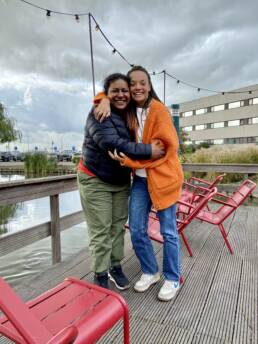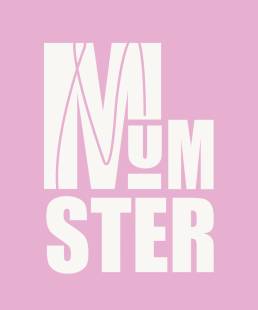The fashion industry is often associated with human rights violations, particularly in countries in the global south where most of our garments are produced; what isn’t often highlighted is how these abuses disproportionately affect women.
For International Women’s day, we wanted to shine a light on the conditions of women in fashion supply chains and offer brands solutions to ensure no one is harmed whilst making their clothes. We had a conversation on Instagram with Rachel Castillo, human rights consultant for fashion brands, read on to learn what she had to say.
It’s estimated that 80% of garment workers are women and whilst they produce garments for some of the most profitable companies in the world, they are often working in unsafe conditions and paid poverty wages. They are known to be working long hours, denied breaks and often face violence. We wanted to learn more about what happens in fashion supply chains and have insights into potential solutions for brands to ensure that their clothes are made ethically so last week for International Women’s Day we spoke to Rachel Castillo, a human rights consultant who helps improve working conditions in fashion brands’ business operations and supply chains.
She started her journey in ethical fashion during her studies when she went to India for an internship at an NGO. During that trip she was intrigued with how women were treated so after completing a master’s program in human rights, she started supporting brands in ensuring all humans involved in fashion brands’ operations are treated and paid fairly. She now works as a freelancer with fashion companies that want to take responsibility for the working conditions in their supply chain.
"It’s not possible to sell a pair of trousers for 20 euros and be compliant with all these regulations and international guidelines". Rachel Castillo

Workers exploitation in supply chains: how, why and where.
She explains that the main challenges she’s witnessed in fashion supply chains are child labour, excessive and unpaid overtime, gender-based violence, harassment and discrimination, as well as the lack of a living wage and the gender pay gap. She explains the importance, as well as focusing on what happens in the supply chain, to look critically at the culture inside a company’s headquarters. It’s important to ensure that internal practices are not reinforcing harmful stereotypes.
She believes a lot of these human rights violations stem from an unbalanced distribution of power and wealth. What we do see happening in the fashion industry is that most of the profits go to brands’ margins and a small amount of money goes to the suppliers.
What she found to be the most effective to create more awareness of the human rights violations in garment factories is Women’s Empowerment programs.
These long-term projects involve teaching women what their rights are, training them to take up different roles and teaching them different skills for their career development so they can become more confident and speak up when something isn’t right. Another very important measure that can foster a safe and open work environment is setting up a grievance mechanism that allows workers to raise issues safely, as well as having a remediation plan to help solve the conflict.
Power of brands.
For brands, having gender equality, Rachel explained, isn’t only desirable from a moral perspective, but it’s also financially beneficial as it leads to an increase in productivity, creativity and innovation.
When it comes to making changes in supply chains, big brands have more leverage over suppliers, meaning they have more power to enforce certain rules, but since it’s common for different brands to work at the same factory, it’s necessary for them to be aligned to create change. This can be hard when some brands don’t prioritise human rights. Rachel notes how big fashion brands have a more traditional business model which means they aim to produce as much as possible, as fast as possible whilst smaller brands are more intrinsically motivated to make a change, yet they have less power. This is also true when it comes to sustainability compliance as small brands often don’t know where to start and might be lacking the budget, the expertise and the time.
Rachel thinks it’s crucial for brands to learn about people in their supply chains, build relationships with suppliers, visit factories and get to know the workers, ensuring that they are safe and treated equally.

The way forward: Solutions for fashion brands.
The advice she gives brands is to aim to minimise or stop the risks in their supply chain. This can be done by getting insight into what is happening in the factories, taking into consideration cultural beliefs and gaining a better understanding of a country’s context. But looking critically at brands’ behaviour towards suppliers is necessary. Asking them for feedback, and taking ownership and accountability for the issues. Once brands gain insights into their supply chains, the next step is developing goals and working towards them with a structural plan that can measure progress. She suggests a couple of useful tools for brands, the CSR risk checker tool and the gender-responsive human rights due diligence tool by Plan International.
To avoid Greenwashing, Rachel recommends brands avoid vague words and exaggerated claims like 100% sustainability. Communicating honestly and transparently, sharing truthful information on the work that is being done and areas that need to be improved. Rachel likes to work with local organisations that can support suppliers in creating a safe work environment. Rachel mentions Arisa for their collaborative work with local organisations in India to improve working conditions through training programmes.
Women uprising: an inspiring story
To conclude our interview, Rachel shares an inspirational example of a woman she worked with in India during an educational program in partnership with
Fair Wear. When they began the program, everyone was terrified to share their struggles as no one was used to open dialogue but once trust was built and the workers felt safe to share their experience, one of the women was so brave to open up and admitted that the working environment was toxic and thanks to the support of an NGOn she was able to quit her job and study. Now she is educating other women on their rights.
This shows how the power of showing concern, asking questions and being interested can change someone’s life! That’s what all fashion brands should aim for, a working environment all throughout the supply chain where people are safe to speak up, ensuring everyone can be heard, valued and paid fairly. And foremost, live a dignified life.
Related Posts
December 18, 2023
The True Impact of Vegan Handbags: How Lisa Marin’s life cycle analysis proves their products are better for the planet than (faux) leather alternatives.
Handbags are one of the most prominent…
September 1, 2023
A Tool for Change: Unveiling the Visionaries of Sustainable Fashion
In a world dominated by fast fashion…
August 16, 2023
Driving Change in the Fashion Industry: Lessons from the Copenhagen Global Fashion Summit 2023
The fashion industry has long been…



